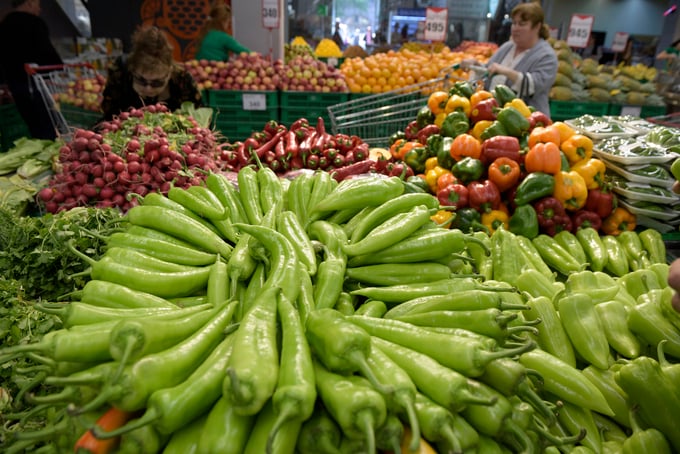May 24, 2025 | 16:29 GMT +7
May 24, 2025 | 16:29 GMT +7
Hotline: 0913.378.918
May 24, 2025 | 16:29 GMT +7
Hotline: 0913.378.918

A fresh produce market.
Knowing how value is distributed through the world’s agrifood systems would make it a lot easier to optimize and transform them.
To contribute to the evidence base required, the Food and Agriculture Organization of the United Nations (FAO) is developing a new data set to track how resources flow across the economy and assess how many of them end up in the agricultural sector.
The new Food Value Chain domain is now available on the FAOSTAT portal. It aims to break down the national food expenditures by final consumers through the different stages of the agrifood value chains, following the “Food Dollar” approach pioneered by the Economic Research Service (ERS) of the United States Department of Agriculture (USDA). FAO, the Cornell University and the ERS have joined forces to adapt and scale up the USDA approach, with an eye to better understanding the magnitude of the role played by post-harvest food value chain intermediation such as processing, storage, transport and wholesaling.
The new FAOSTAT domain, which will steadily expand coverage, has information for 65 countries from 2005 through 2015. It shows that around 20 percent of expenditure on food at home accrues to the farmer, around one-fourth to processing, and nearly half to retail and wholesale trade.
Meanwhile, only around 6.7 percent of consumer expenditure on food away from home accrues to the farmer. That figure is steadily decreasing even, highlighting the need to pay attention to the post farm-gate dimension of the food value chains.
By comparison, farmers in the United States of America earned 14.5 cents for every consumer dollar spent on domestically produced foods, and six cents on each dollar spent on food away from home. [BV(1]
Consistent data of this sort is key, among other policy agendas, for the strategic analysis of the capacity to generate employment within the entire agrifood system.
The new FAOSTAT domain marks an important and complex shift towards moving statistical collection and analysis from a focus on the agriculture sector to agrifood systems at large, said Jose Rosero Moncayo, head of the FAO’s Statistics Division. Another example is the pathbreaking work FAOSTAT is doing on greenhouse gas emissions across the farm to form spectrum.
Making sense of the data
The farmer’s share for food away from home, the most dynamic sector of agrifood systems, varies significantly around the world, from less than 0.5 percent in Singapore to 25 percent in India.
“Typically, as you grow richer, supermarkets and food processors gain a lot of power vis-à-vis farmers, and this data illustrates that,” said Statistics Deputy Director Piero Conforti.
In fact the share accruing to farmers is a starting point to gain main insights. For example, the farm share of the food dollar can be higher where agriculture produces a lot of high-value fruits and horticultural products. And if the farm share declines because of overall economic development in a country, that can be a welcomed development, which will likely boost the value of farm inputs to food away from home as people have higher willingness to pay.
The current dataset will steadily be updated and broadened to more countries, fetching more data that is made available around the world. At the moment, the dataset necessarily includes broad categories that can encompass exogenous elements such as tobacco, while most current measurements of the share of food away from home include accommodation or leisure charges.
Despite coverage limitations and inevitable time lags for now, the opening of the domain marks a significant step forward in taking a wider point of view, one that embraces the process leading from primary production to food consumption as a whole.
(FAO.org)

(VAN) Alt Carbon has raised $12 million in a seed round as it plans to scale its carbon dioxide removal work in the South Asian nation.

(VAN) Attempts to bring down the price of the Japanese staple have had little effect amid a cost-of-living crisis.

(VAN) Fourth most important food crop in peril as Latin America and Caribbean suffer from slow-onset climate disaster.

(VAN) Shifting market dynamics and the noise around new legislation has propelled Trouw Nutrition’s research around early life nutrition in poultry. Today, it continues to be a key area of research.

(VAN) India is concerned about its food security and the livelihoods of its farmers if more US food imports are allowed.

(VAN) FAO's Director-General emphasises the need to work together to transform agrifood systems.

(VAN) Europe is facing its worst outbreak of foot-and-mouth since the start of the century.